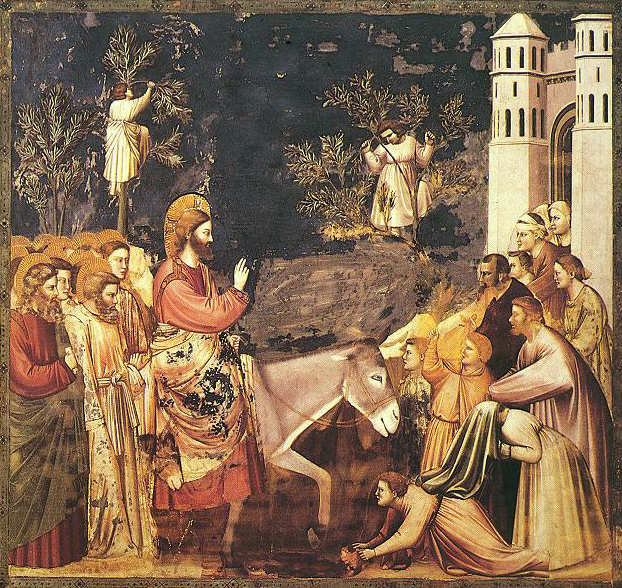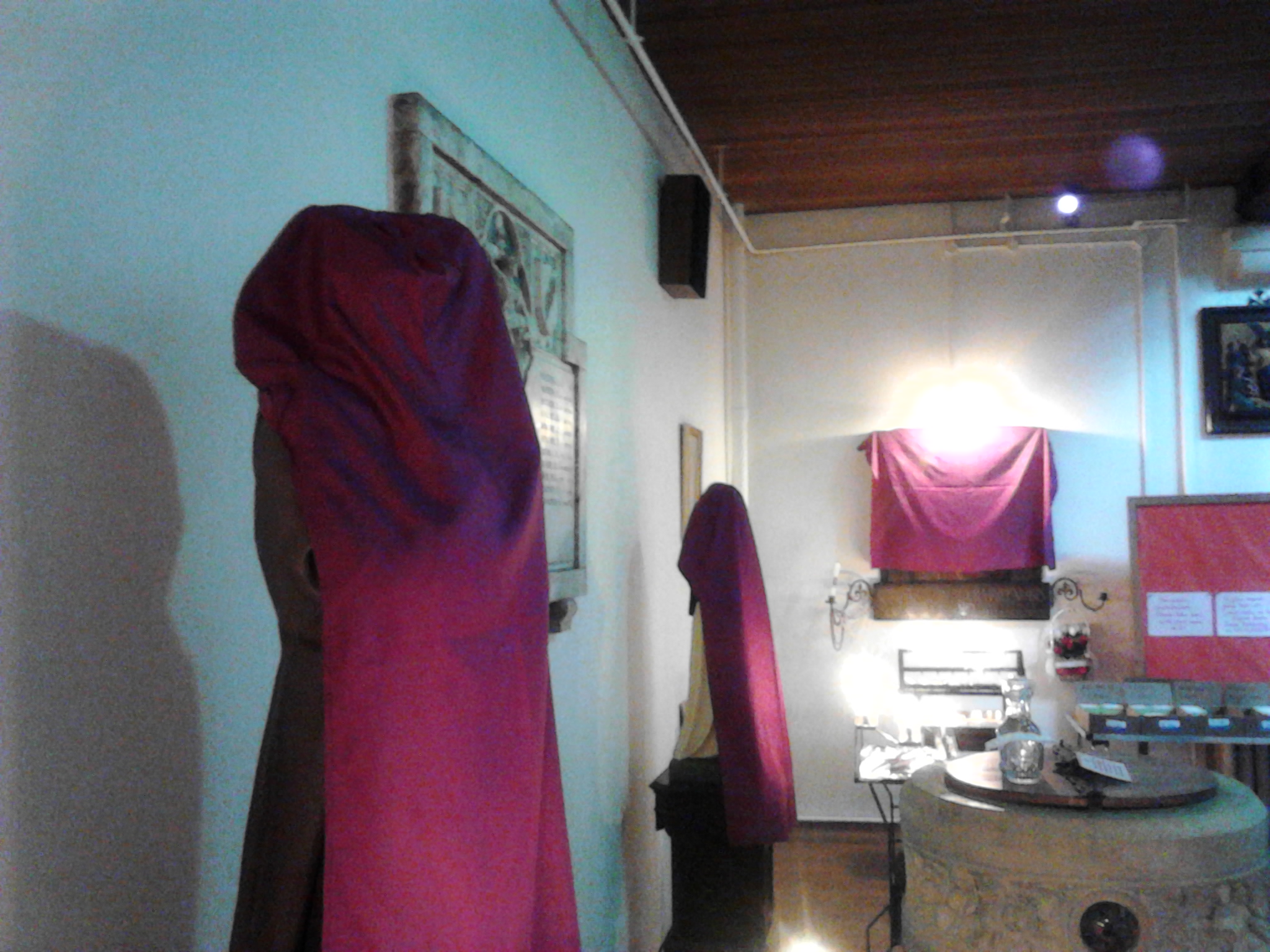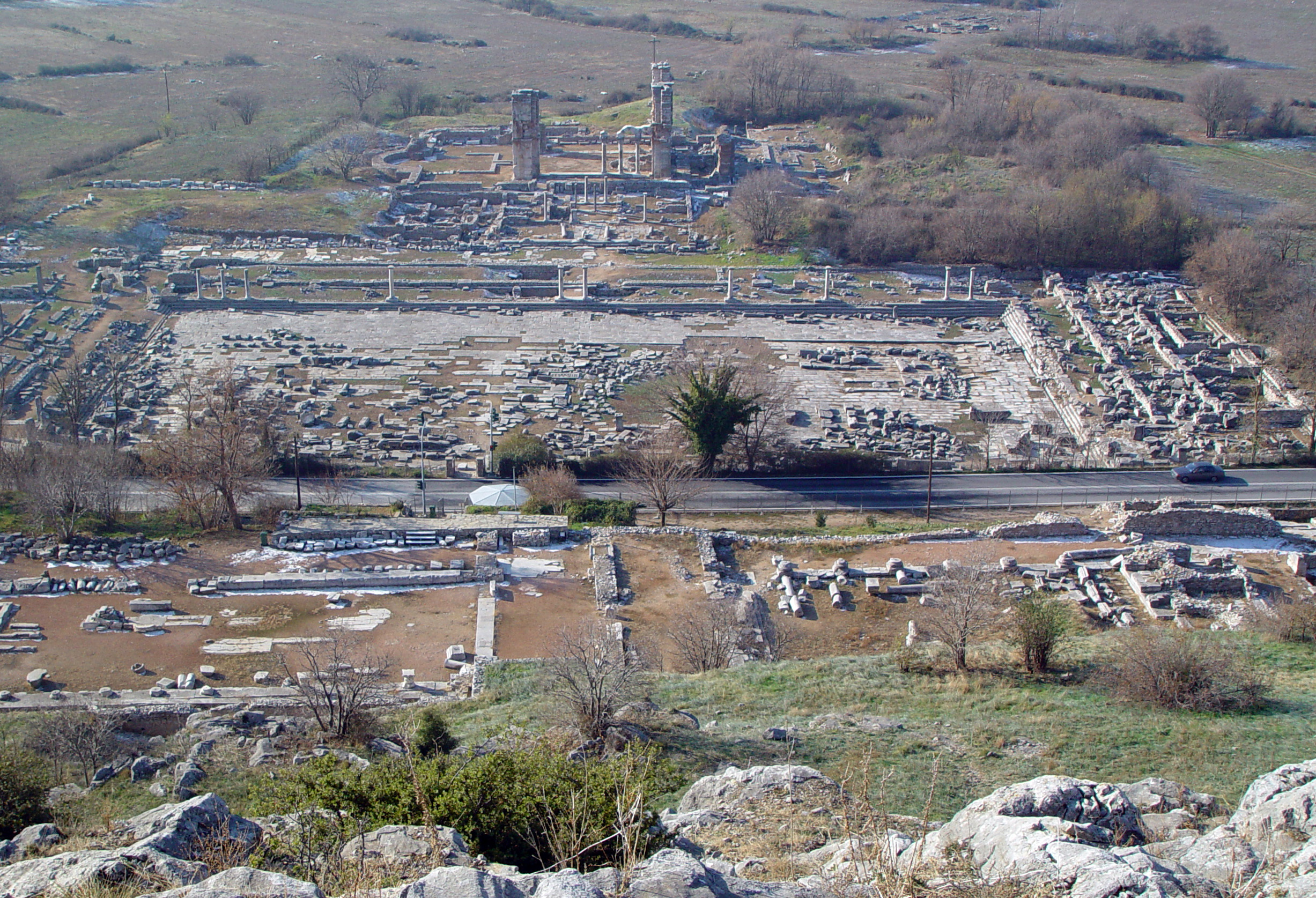|
Himmelskönig, Sei Willkommen, BWV 182
(King of Heaven, welcome), 182, is a church cantata by Johann Sebastian Bach. He composed it in Weimar for Palm Sunday, and first performed it on 25 March 1714, which was also the feast of the Annunciation that year. History and words In Weimar, Bach was the court organist of Johann Ernst von Sachsen-Weimar. On 2 March 1714, he was promoted to , an honour which included a monthly performance of a church cantata in the . According to Bach scholar Alfred Dürr, this cantata is Bach's first cantata in a series which was meant to cover all Sundays within four years. However, ''Widerstehe doch der Sünde'', BWV 54 has also been proposed as the first. In any event, BWV 182 preceded . Bach composed the cantata for the Marian feast of the Annunciation, always celebrated on 25 March, which fell on Palm Sunday in 1714. Other than in Leipzig, where ''tempus clausum'' was observed during Lent and no cantatas were permitted, Bach could perform in Weimar a cantata especially meant for t ... [...More Info...] [...Related Items...] OR: [Wikipedia] [Google] [Baidu] |
Church Cantata (Bach)
Throughout his life as a musician, Johann Sebastian Bach composed cantatas for both secular and sacred use. His church cantatas are cantatas which he composed for use in the Lutheran church, mainly intended for the occasions of the liturgical year. Bach's ''Nekrolog'' mentions five cantata cycles: "Fünf Jahrgänge von Kirchenstücken, auf alle Sonn- und Festtage" (Five year-cycles of pieces for the church, for all Sundays and feast days), which would amount to at least 275 cantatas,Alfred Dörffel. Bach-Gesellschaft Ausgabe Volume 27: '' Thematisches Verzeichniss der Kirchencantaten No. 1–120''. Breitkopf & Härtel, 1878. Introduction, p. VI or over 320 if all cycles would have been ideal cycles.Günther Zedler''Die Kantaten von Johann Sebastian Bach: Eine Einführung in die Werkgattung''.Books on Demand, 2011. p. 24–25/ref> The extant cantatas are around two-thirds of that number, with limited additional information on the ones that went missing or survived as fra ... [...More Info...] [...Related Items...] OR: [Wikipedia] [Google] [Baidu] |
List Of Church Cantatas By Liturgical Occasion
The following is a list of church cantatas, sorted by the liturgical occasion for which they were composed and performed. The genre was particularly popular in 18th-century Lutheran Germany, although there are later examples. The Liturgical calendar (Lutheran)#Reformation era, liturgical calendar of the German Reformation era had, without counting Reformation Day and days between Palm Sunday and Easter, 72 occasions for which a cantata could be presented. Composers such as Telemann composed cycles of church cantatas comprising all 72 of these occasions (e.g. ''Harmonischer Gottes-Dienst''). Such a cycle is called an "ideal" cycle, while in any given liturgical year feast days could coincide with Sundays, and the maximum number of Sundays after Epiphany and the maximum number of Sundays after Trinity could not all occur. In some places, of which Leipzig in Johann Sebastian Bach's time is best known, no concerted music was allowed for the three last Sundays of Advent, nor for the Sun ... [...More Info...] [...Related Items...] OR: [Wikipedia] [Google] [Baidu] |
Da Capo
Da capo (, also , ) is an Italian musical term that means "from the beginning" (literally, "from the head"). It is often abbreviated as D.C. The term is a directive to repeat the previous part of music, often used to save space, and thus is an easier way of saying to repeat the music from the beginning. In small pieces, this might be the same thing as a repeat. But in larger works, D.C. might occur after one or more repeats of small sections, indicating a return to the very beginning. The resulting structure of the piece is generally in ternary form. Sometimes, the composer describes the part to be repeated, for example: ''Menuet da capo''. In opera, where an aria of this structure is called a ''da capo aria'', the repeated section is often adorned with grace notes. The word ''Fine'' (Ital. 'end') is generally placed above the stave at the point where the movement ceases after a 'Da capo' repetition. Its place is occasionally taken by a pause (see fermata)."Grove, George; Ful ... [...More Info...] [...Related Items...] OR: [Wikipedia] [Google] [Baidu] |
Passiontide
Passiontide (in the Christian liturgical year) is a name for the last two weeks of Lent, beginning on the Fifth Sunday of Lent, long celebrated as Passion Sunday, and continuing through Lazarus Saturday. The second week of Passiontide is Holy Week, ending on Holy Saturday. History "Passiontide" refers to the last two weeks of Lent. According to Cyril of Scythopolis, during this time the monks of the East, who had chosen the desert for a severer mode of life, returned to their monasteries. In certain countries, such as Brazil and Italy, it is seen as the beginning of the Holy Week observances. The ''Viernes de Dolores'' (Friday of Sorrows) is a solemn pious remembrance of the sorrowful Blessed Virgin Mary on the Friday before Palm Sunday held in the fifth week of Lent. In the Orthodox Church, the Fifth Saturday of Great Lent is known as the Saturday of the Akathist, when the "Akathist to the Theotokos" is sung at Compline. Observance In the Roman Catholic Church, Western Rite ... [...More Info...] [...Related Items...] OR: [Wikipedia] [Google] [Baidu] |
Stanza
In poetry, a stanza (; from Italian language, Italian ''stanza'' , "room") is a group of lines within a poem, usually set off from others by a blank line or Indentation (typesetting), indentation. Stanzas can have regular rhyme scheme, rhyme and Metre (poetry), metrical schemes, but they are not required to have either. There are many different : Stanzaic form, forms of stanzas. Some stanzaic forms are simple, such as four-line quatrains. Other forms are more complex, such as the Spenserian stanza. Fixed verse, Fixed verse poems, such as sestinas, can be defined by the number and form of their stanzas. The stanza has also been known by terms such as ''batch'', ''fit'', and ''stave''. The term ''stanza'' has a similar meaning to ''strophe'', though ''strophe'' sometimes refers to an irregular set of lines, as opposed to regular, rhymed stanzas. Even though the term "stanza" is taken from Italian, in the Italian language the word "strofa" is more commonly used. In music, groups of ... [...More Info...] [...Related Items...] OR: [Wikipedia] [Google] [Baidu] |
Movement (music)
A movement is a self-contained part of a musical composition or musical form. While individual or selected movements from a composition are sometimes performed separately as stand-alone pieces, a performance of the complete work requires all the movements to be performed in succession. A movement is a section Section, Sectioning or Sectioned may refer to: Arts, entertainment and media * Section (music), a complete, but not independent, musical idea * Section (typography), a subdivision, especially of a chapter, in books and documents ** Section sig ..., "a major structural unit perceived as the result of the coincidence of relatively large numbers of structural phenomena". Sources Formal sections in music analysis {{music-stub ... [...More Info...] [...Related Items...] OR: [Wikipedia] [Google] [Baidu] |
Aria
In music, an aria (Italian: ; plural: ''arie'' , or ''arias'' in common usage, diminutive form arietta , plural ariette, or in English simply air) is a self-contained piece for one voice, with or without instrumental or orchestral accompaniment, normally part of a larger work. The typical context for arias is opera, but vocal arias also feature in oratorios and cantatas, or they can be stand-alone concert arias. The term was originally used to refer to any expressive melody, usually, but not always, performed by a singer. Etymology The Italian term ''aria'', which derives from the Greek ἀήρ and Latin ''aer'' (air), first appeared in relation to music in the 14th century when it simply signified a manner or style of singing or playing. By the end of the 16th century, the term 'aria' refers to an instrumental form (cf. Santino Garsi da Parma lute works, 'Aria del Gran Duca'). By the early 16th century it was in common use as meaning a simple setting of strophic poetry; me ... [...More Info...] [...Related Items...] OR: [Wikipedia] [Google] [Baidu] |
Recitative
Recitative (, also known by its Italian name "''recitativo''" ()) is a style of delivery (much used in operas, oratorios, and cantatas) in which a singer is allowed to adopt the rhythms and delivery of ordinary speech. Recitative does not repeat lines as formally composed songs do. It resembles sung ordinary speech more than a formal musical composition. Recitative can be distinguished on a continuum from more speech-like to more musically sung, with more sustained melodic lines. The mostly syllabic ''recitativo secco'' ("dry", accompanied only by continuo, typically cello and harpsichord) is at one end of the spectrum, through ''recitativo accompagnato'' (using orchestra), the more melismatic arioso, and finally the full-blown aria or ensemble, where the pulse is entirely governed by the music. Secco recitatives can be more improvisatory and free for the singer, since the accompaniment is so sparse; in contrast, when recitative is accompanied by orchestra, the singer must per ... [...More Info...] [...Related Items...] OR: [Wikipedia] [Google] [Baidu] |
Philipp Spitta
Julius August Philipp Spitta (27 December 1841 – 13 April 1894) was a German music historian and musicologist best known for his 1873 biography of Johann Sebastian Bach. Life He was born in , near Hoya, and his father, also called Philipp Spitta, was a theologian and wrote the Protestant collection of hymns entitled ''Psalter und Harfe''. As a child, the younger Spitta learnt the piano, pipe organ, and musical composition. He studied theology and classical philology at the University of Göttingen from 1860, graduating in 1864 with a Ph.D. for a dissertation on Tacitus (''Der Satzbau bei Tacitus'', 1866). While at university, he composed, wrote a biography of Robert Schumann, and became friends with Johannes Brahms. He became a teacher of Ancient Greek and Latin language in, successively, Reval, Sondershausen, and Leipzig, while pursuing his interest in and lecturing on music history in general and Johann Sebastian Bach in particular. His Bach study began to be publi ... [...More Info...] [...Related Items...] OR: [Wikipedia] [Google] [Baidu] |
Gospel Of Matthew
The Gospel of Matthew), or simply Matthew. It is most commonly abbreviated as "Matt." is the first book of the New Testament of the Bible and one of the three synoptic Gospels. It tells how Israel's Messiah, Jesus, comes to his people and forms a community of disciples, of how he taught the people through such events as the Sermon on the Mount and its Beatitudes, and how Israel becomes divided and how Jesus condemns this hostile Israel. This culminates in his departure from the Temple and his execution. At this point many people reject Jesus, and on his resurrection he sends the disciples to the gentiles. Matthew seems to emphasize that the Jewish tradition should not be lost in a church that was increasingly becoming gentile. The gospel reflects the struggles and conflicts between the evangelist's community and the other Jews, particularly with its sharp criticism of the scribes and Pharisees with the position that through their rejection of Christ, the Kingdom of God h ... [...More Info...] [...Related Items...] OR: [Wikipedia] [Google] [Baidu] |
First Epistle To The Corinthians
The First Epistle to the Corinthians ( grc, Α΄ ᾽Επιστολὴ πρὸς Κορινθίους) is one of the Pauline epistles, part of the New Testament of the Christian Bible. The epistle is attributed to Paul the Apostle and a co-author, Sosthenes, and is addressed to the Christian church in Corinth. Scholars believe that Sosthenes was the amanuensis who wrote down the text of the letter at Paul's direction. It addresses various issues that had arisen in the Christian community at Corinth, and is composed in a form of Koine Greek. Authorship There is a consensus among historians and theologians that Paul is the author of the First Epistle to the Corinthians (c. AD 53–54). The letter is quoted or mentioned by the earliest of sources, and is included in every ancient canon, including that of Marcion of Sinope. Some scholars point to the epistle's potentially embarrassing references to the existence of sexual immorality in the church as strengthening the case for the aut ... [...More Info...] [...Related Items...] OR: [Wikipedia] [Google] [Baidu] |
Epistle To The Philippians
The Epistle to the Philippians is a Pauline epistle of the New Testament of the Christian Bible. The epistle is attributed to Paul the Apostle and Timothy is named with him as co-author or co-sender. The letter is addressed to the Christian church in Philippi. Paul, Timothy, Silas (and perhaps Luke) first visited Philippi in Greece ( Macedonia) during Paul's second missionary journey from Antioch, which occurred between approximately 49 and 51 AD. In the account of his visit in the Acts of the Apostles, Paul and Silas are accused of "disturbing the city". There is a general consensus that Philippians consists of authentically Pauline material, and that the epistle is a composite of multiple letter fragments from Paul to the church in Philippi. These letters could have been written from Ephesus in 52–55 AD or Caesarea Maritima in 57–59, but the most likely city of provenance is Rome, around 62 AD, or about 10 years after Paul's first visit to Philippi. Harris, Stephen L., Un ... [...More Info...] [...Related Items...] OR: [Wikipedia] [Google] [Baidu] |





.jpg)
